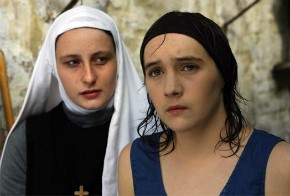God and global cinema

For a century, cinema has been a critical medium for presenting religious themes in mainstream culture. Though such efforts are in danger of being swamped by Hollywood megaproductions like this year’s Noah, which set stunning commercial records around the world—including in Russia, South Korea, Mexico, and Brazil—there are filmmakers who find a distinctive religious voice.
By far the most significant religious film of recent years is Xavier Beauvois’s Of Gods and Men, a 2010 French production which portrays the Trappist monks who stubbornly maintained their presence in Algeria until jihadi guerrillas murdered seven of them in 1996. The film never lapses into hatred for the perpetrators. It is simply one of the greatest and most convincing depictions of sanctity in cinema.
Another portrait of faith in the heroic mode is the 2012 Mexican action epic Cristiada (For Greater Glory), which depicts the Catholic Cristero revolt against the country’s aggressively antireligious tyranny in the 1920s. The centerpiece of this reverential work is the story of a true-life martyr, the teenaged rebel José Luis Sánchez.




